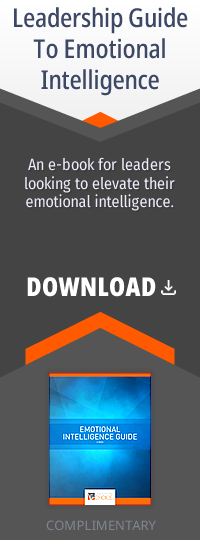
Mastering Confidence in Decision-Making
The decisions you make as a leader are the cornerstone of your organization’s success. Each choice – big or small – sets a course that can propel your team toward triumph or lead to unforeseen challenges. But what sets apart a truly impactful leader is not just the decisions they make, but the confidence with which they make them. This confidence is a skill cultivated over time through practice, understanding, and strategy. Leaders have faced moments of doubt, where the weight of choices seemed overwhelming. Perhaps there were times when uncertainty clouded your judgment, or the fear of repercussions made you second-guess your instincts. These experiences are common and highlight a vital truth: decision-making is as much an art as it is a science.
This article is your guide to mastering this art. It’s crafted to help you transform your decision-making process from a source of stress into a strength that defines your leadership. You’ll delve into what confident decision-making truly entails and why it’s pivotal for the thriving of your organization. Through this exploration, you’ll uncover strategies to enhance your decision-making abilities, ensuring that each decision you make not only aligns with your vision but also bolsters the morale and effectiveness of your team.
Understanding Confident Decision-Making
As you step into the realm of confident decision-making, it’s crucial to first recognize what this concept truly embodies. Confident decision-making isn’t about always being right; rather, it’s about embracing a mindset that balances assurance with humility, decisiveness with thoughtfulness.
Characteristics of Confident Decision-Makers
You might wonder what sets confident decision-makers apart. These individuals exhibit several key traits:
-
- Clarity of Purpose: You understand your goals and the objectives of your organization. This clear vision guides your decisions, ensuring they align with your overarching mission.
- Resilience in the Face of Uncertainty: Decision-making often involves navigating unknowns. You demonstrate the ability to remain steadfast, making informed choices even when complete information is not available.
- Adaptability: The willingness to adapt is a hallmark of confidence. You’re not rigid in your approach; instead, you’re open to new information and can pivot your strategy when necessary.
- Self-awareness: Understanding your strengths and acknowledging areas for growth allows you to approach decisions with a grounded perspective.
- Effective Communication: Articulating your decisions and the rationale behind them is key. This not only fosters trust but also encourages open dialogue within your team.
The Psychology Behind Decision-Making Confidence
 The psychological underpinnings of confidence in decision-making are as significant as the traits themselves. Here’s how you can cultivate this mindset:
The psychological underpinnings of confidence in decision-making are as significant as the traits themselves. Here’s how you can cultivate this mindset:
-
- Balancing Confidence and Humility: It’s essential to strike a balance. Overconfidence can lead to risky decisions, while a lack of confidence can result in missed opportunities. Embrace a mindset that values assertiveness but is open to feedback and alternative viewpoints.
- Coping with the Fear of Failure: Fear of making the wrong decision can be paralyzing. Recognize that failure is a part of growth. Viewing decisions as learning opportunities rather than win-or-lose scenarios can significantly bolster your confidence.
- Developing a Growth Mindset: Foster a mindset that thrives on challenges and views setbacks as stepping stones. This approach will not only boost your decision-making confidence but also inspire those around you to adopt a similar attitude.
- Mindfulness and Decision-Making: Practicing mindfulness can enhance your decision-making skills. It allows you to be present in the moment, reduces stress, and improves your ability to weigh options objectively.
Confident decision-making in leadership is about understanding and developing certain key traits and adopting a psychological approach that supports assertiveness, adaptability, and resilience. As you cultivate these aspects within yourself, you’ll notice a significant transformation in how you make decisions and in how these decisions shape the path of your leadership.
The Role of Information and Knowledge
In your journey to confident decision-making, understanding the critical role of information and knowledge is paramount. How you gather, process, and apply information directly influences the quality and confidence of your decisions.
Informed Decision-Making
-
- Gathering Relevant Information: Your first step is to seek out the necessary data and insights that pertain to the decision at hand. This involves not just collecting facts, but also understanding the context and potential impact of those facts. Remember, quality trumps quantity – having a plethora of information can be as paralyzing as having too little.
- Analyzing Information Effectively: Once you have the relevant information, the next step is analysis. This doesn’t mean just skimming through data, but critically evaluating it. Look for patterns, consider different perspectives, and weigh the potential outcomes. This process helps in transforming raw data into actionable insights.
- Avoiding Information Overload: In an age where data is abundant, it’s easy to fall into the trap of information overload. As a leader, you must discern which information is essential and which is superfluous. Learning to filter information effectively is crucial for maintaining clarity and focus in your decision-making process.
Leveraging Expertise and Experience
-
- Drawing on Past Experiences: Your past experiences are a valuable resource. Reflect on previous situations where you had to make similar decisions. What worked? What didn’t? The lessons learned from these experiences can provide valuable guidance.
- Consulting with Experts: No one is expected to know everything. Sometimes, the best decision you can make is to consult with experts or mentors. Their insights can provide a new dimension to your understanding and help you view the situation through a different lens.
- Balancing Expertise with Fresh Perspectives: While relying on expertise and experience is crucial, it’s also important to remain open to new ideas. Sometimes, fresh perspectives can challenge traditional thinking and lead to innovative solutions.
- Learning from Every Decision: Every decision, irrespective of its outcome, is an opportunity to learn. Reflect on the decisions you make – what led to success, what caused setbacks, and how you can improve in the future. This reflective practice turns every decision into a stepping stone towards greater decision-making confidence.
In embracing these approaches, you’re not just making decisions based on what feels right, but what is supported by a rich web of information, expertise, and experience. This informed approach to decision-making not only heightens your confidence but also significantly enhances the likelihood of achieving the desired outcomes for your organization.
Developing Decision-Making Skills
In your leadership role, enhancing your decision-making skills is an ongoing process. This section explores practical ways you can strengthen these abilities, ensuring your decisions are not just made with confidence, but also pave the way for successful outcomes.
Strategies to Enhance Decision-Making Skills
-
- Setting Clear Objectives: Begin by setting clear, achievable objectives for each decision. Understand what you aim to accomplish and why it’s important. This clarity will guide you through the decision-making process and keep you focused on the end goal.
- Practicing Scenario Analysis: Engage in scenario planning. For each significant decision, envision different outcomes based on various scenarios. This practice not only prepares you for diverse possibilities but also sharpens your strategic thinking skills.
- Developing Critical Thinking: Critical thinking is a cornerstone of effective decision-making. Challenge your assumptions, ask probing questions, and evaluate arguments logically. This approach helps in making well-reasoned decisions that stand up to scrutiny.
- Enhancing Emotional Intelligence: Your emotions can influence your decisions. Developing emotional intelligence enables you to understand and manage your emotions, as well as empathize with others. This understanding is vital in making decisions that are not only logical but also consider the human element.
- Learning from Diverse Sources: Expose yourself to a variety of perspectives and disciplines. Reading, attending workshops, or even engaging in conversations outside your usual circle can offer insights that enhance your decision-making skills.

Overcoming Decision Paralysis
-
- Recognizing the Symptoms: Decision paralysis often stems from fear – fear of making the wrong choice or facing negative consequences. Recognize when you’re stalling due to indecision and identify the root causes.
- Breaking Down the Decision: Large decisions can be overwhelming. Break them down into smaller, more manageable parts. This approach makes the process less daunting and allows for more focused analysis.
- Setting Deadlines: Imposing a deadline for your decision can be a powerful motivator. It forces you to prioritize and act, rather than getting stuck in an endless cycle of deliberation.
- Seeking Input, Not Permission: While it’s important to seek advice, remember that the final decision rests with you. Use input to inform your decision-making, but avoid relying on others to make the choice for you.
- Embracing Imperfection: No decision is perfect, and seeking perfection can lead to paralysis. Accept that some level of uncertainty is inevitable and that mistakes are part of the learning process.
By actively working on these areas, you will find that your ability to make decisions confidently and effectively becomes more innate.
Building a Decision-Confident Culture
As a leader your approach to decision-making sets the tone for your entire organization. Cultivating a culture where confident decision-making is valued and encouraged can significantly enhance the performance and morale of your team.
Fostering Confidence in Teams
-
- Encouraging Autonomy: Empower your team members by entrusting them with decision-making responsibilities. This not only boosts their confidence but also promotes a sense of ownership and accountability.
- Providing Constructive Feedback: Feedback is a powerful tool. Offer constructive criticism that focuses on the decision-making process rather than just the outcome. This approach helps team members understand what they did well and where there is room for improvement.
- Creating a Safe Environment for Risk-Taking: Encourage your team to take calculated risks. Create an atmosphere where it’s safe to experiment and where failures are viewed as learning opportunities rather than setbacks.
- Promoting Collaborative Decision-Making: Foster a collaborative environment where team members feel comfortable sharing their ideas and perspectives. This collaboration can lead to more well-rounded and effective decisions.
- Leading by Example: Your approach to decision-making sets the standard. Demonstrate confidence in your decisions, show how you navigate challenges, and be transparent about your learning process. Your example can inspire and guide your team.
Measuring and Reflecting on Decision Outcomes
-
- Setting Metrics for Success: Establish clear metrics to evaluate the outcomes of decisions. These metrics should align with your organizational goals and provide a tangible way to assess the effectiveness of decisions.
- Conducting Regular Reviews: Periodically review the decisions made, both individually and as a team. Discuss what worked, what didn’t, and why. These reviews are invaluable for continuous improvement.
- Encouraging Reflective Practice: Promote a culture where reflection is a regular part of the decision-making process. Encourage your team to think about the decisions they make, the factors that influenced them, and the lessons learned.
- Celebrating Successes and Learning from Failures: Recognize and celebrate when good decisions lead to positive outcomes. Similarly, when decisions don’t pan out as expected, focus on the learnings rather than the shortcomings. This balanced approach helps maintain morale and motivates continued growth.
Solidifying Your Leadership Through Confident Decision-Making
As you navigate the complexities of leadership, remember that the essence of confident decision-making lies in continuous learning and application. It’s a journey that involves understanding your strengths, acquiring knowledge, refining your skills, and fostering a supportive environment for others to do the same. By embracing these strategies, you don’t just make decisions with confidence; you also inspire those around you to reach their potential. Each decision is an opportunity to reinforce your leadership and contribute to the success of your organization. As you apply these insights, watch as your decision-making process transforms from a challenge into one of your most potent tools for leading effectively.


